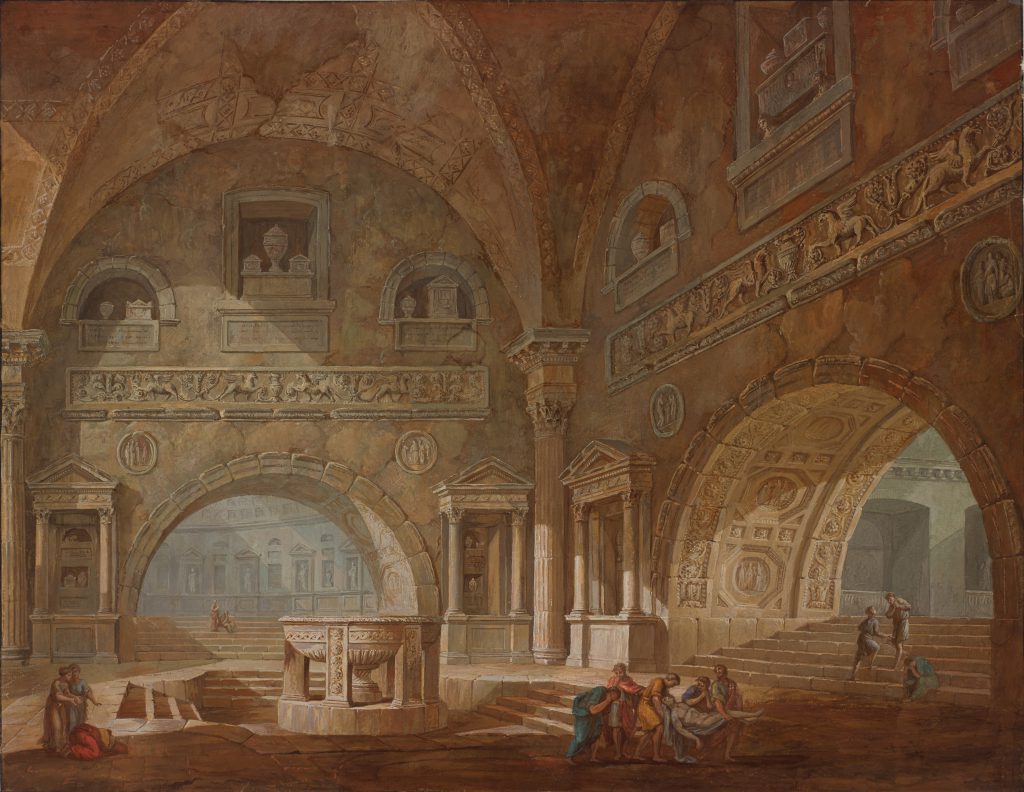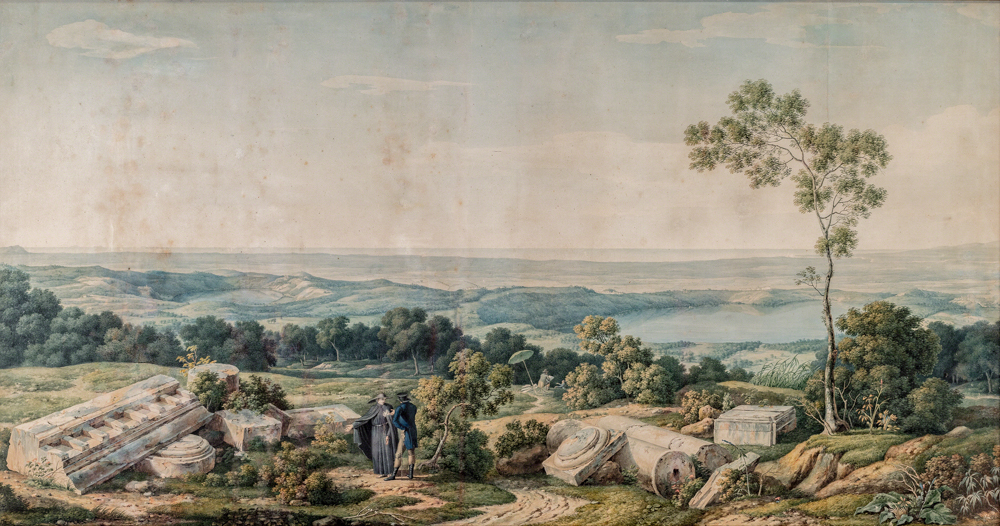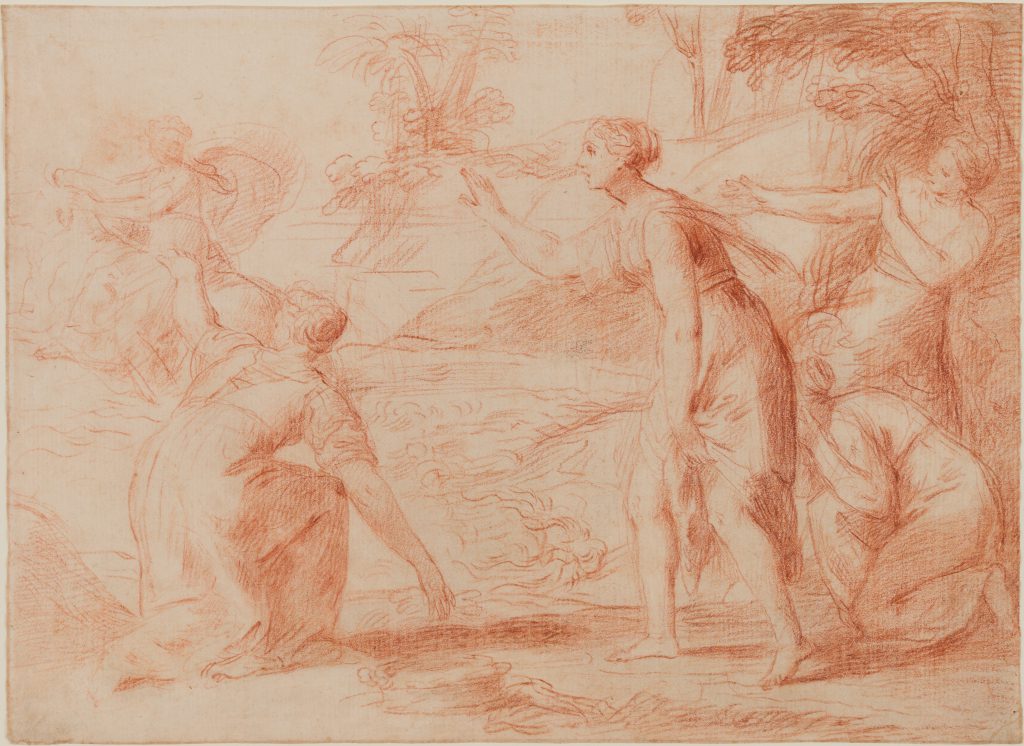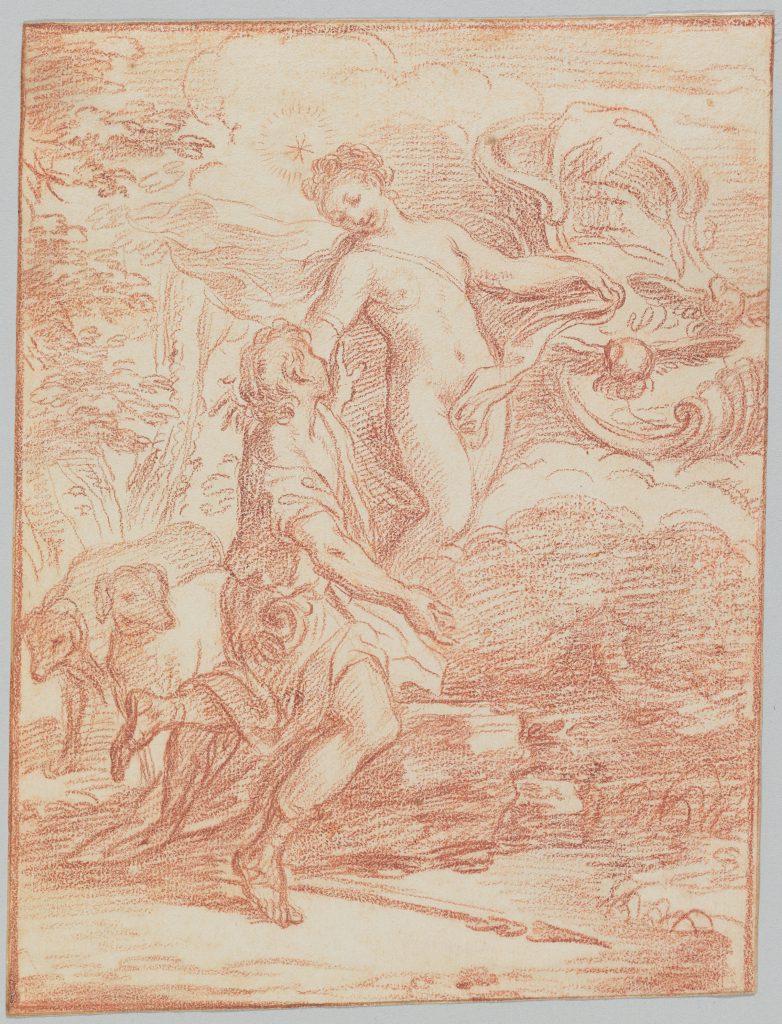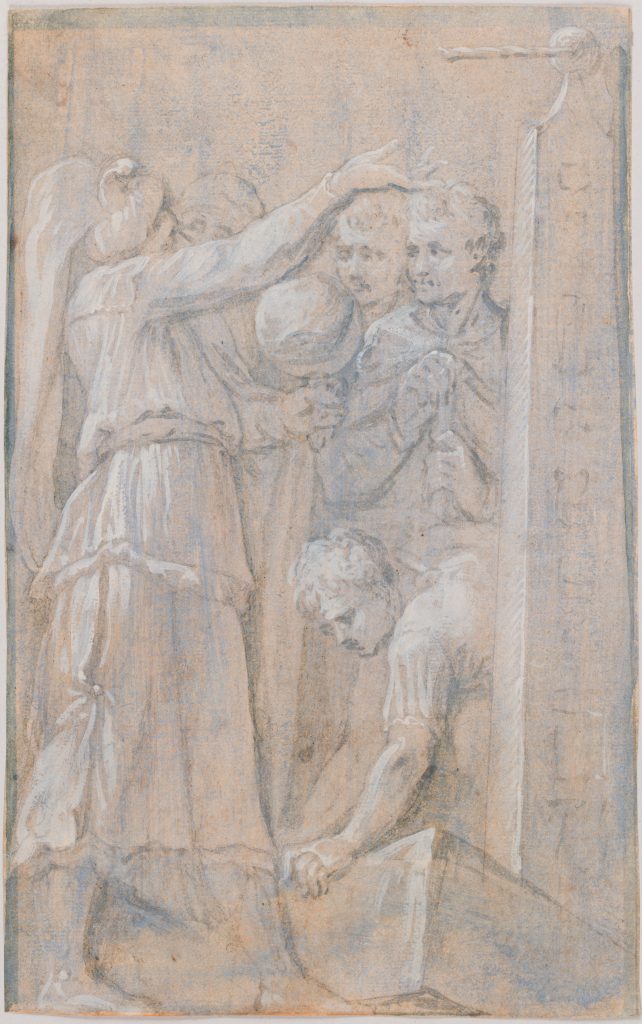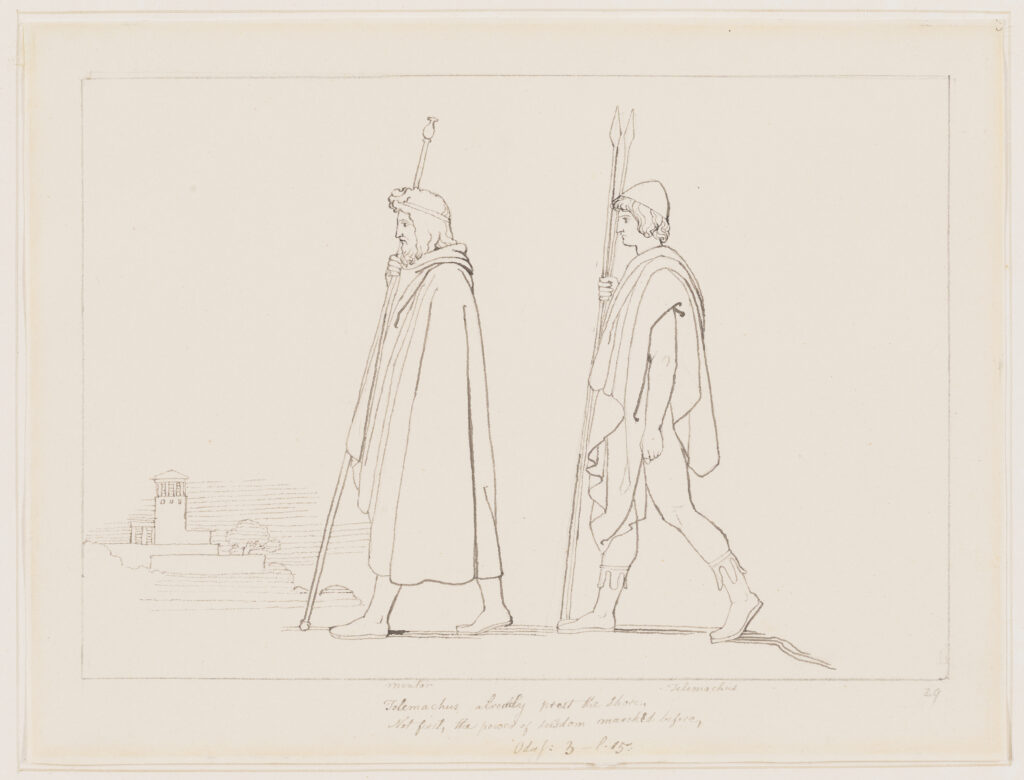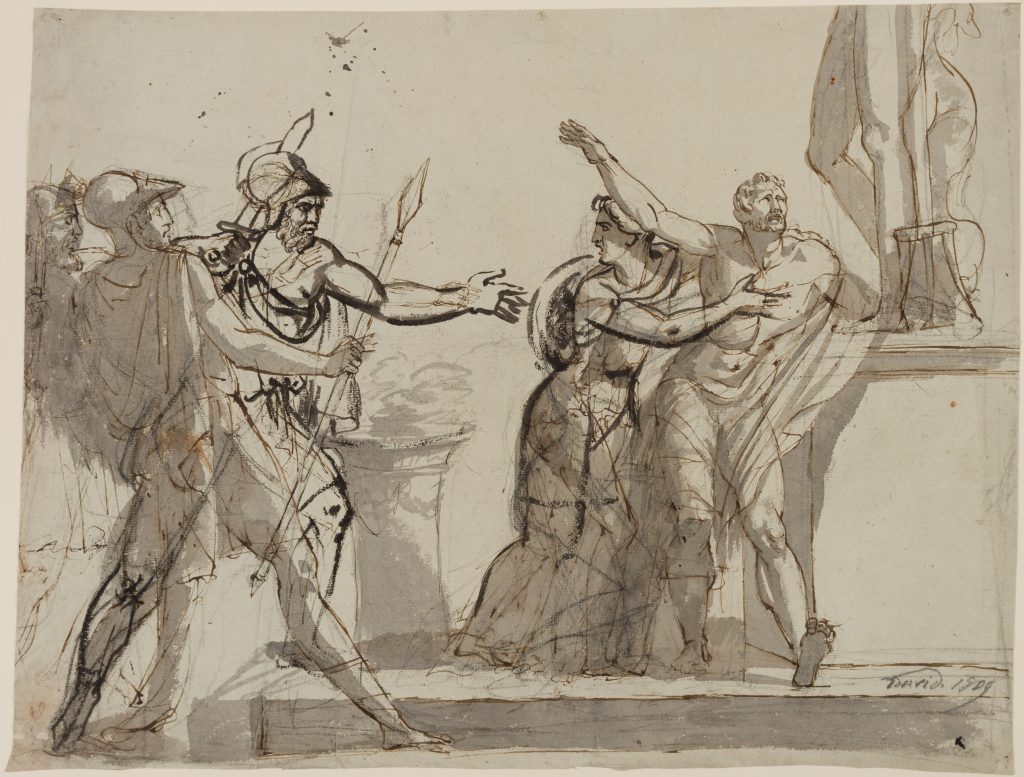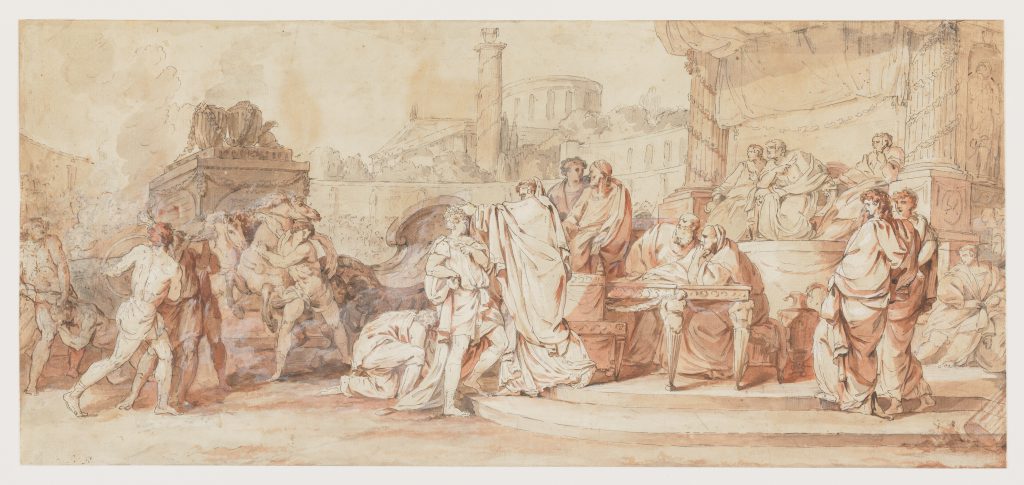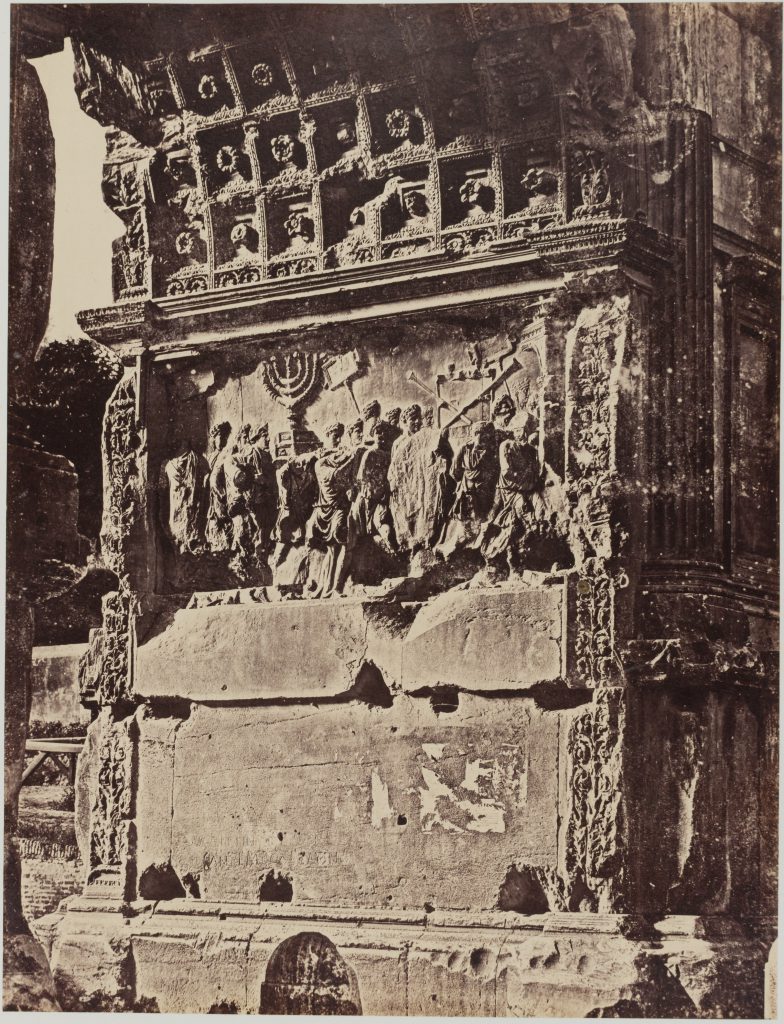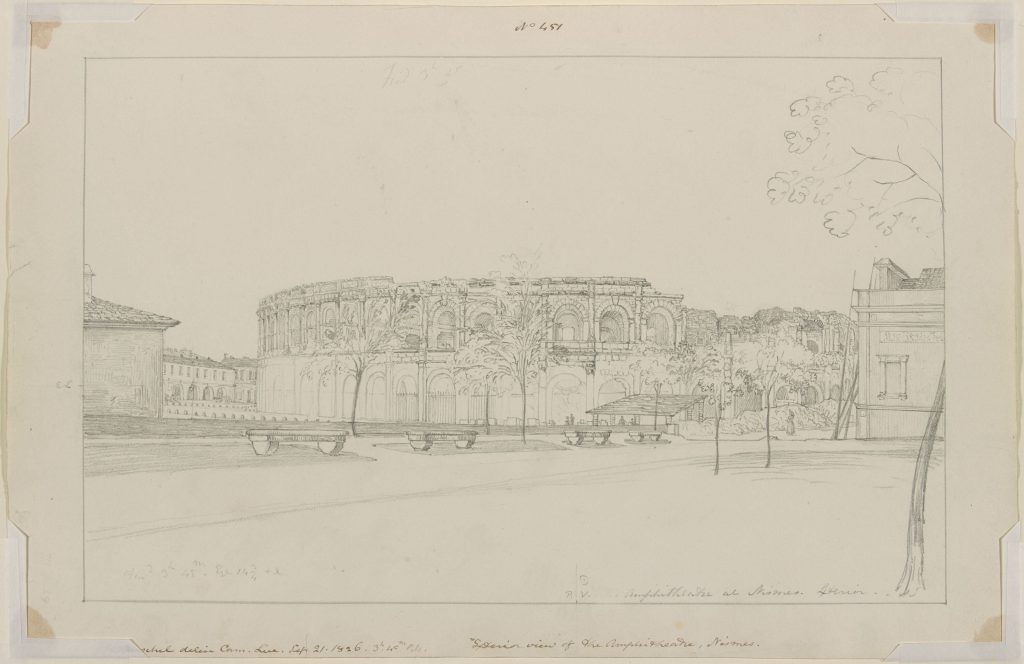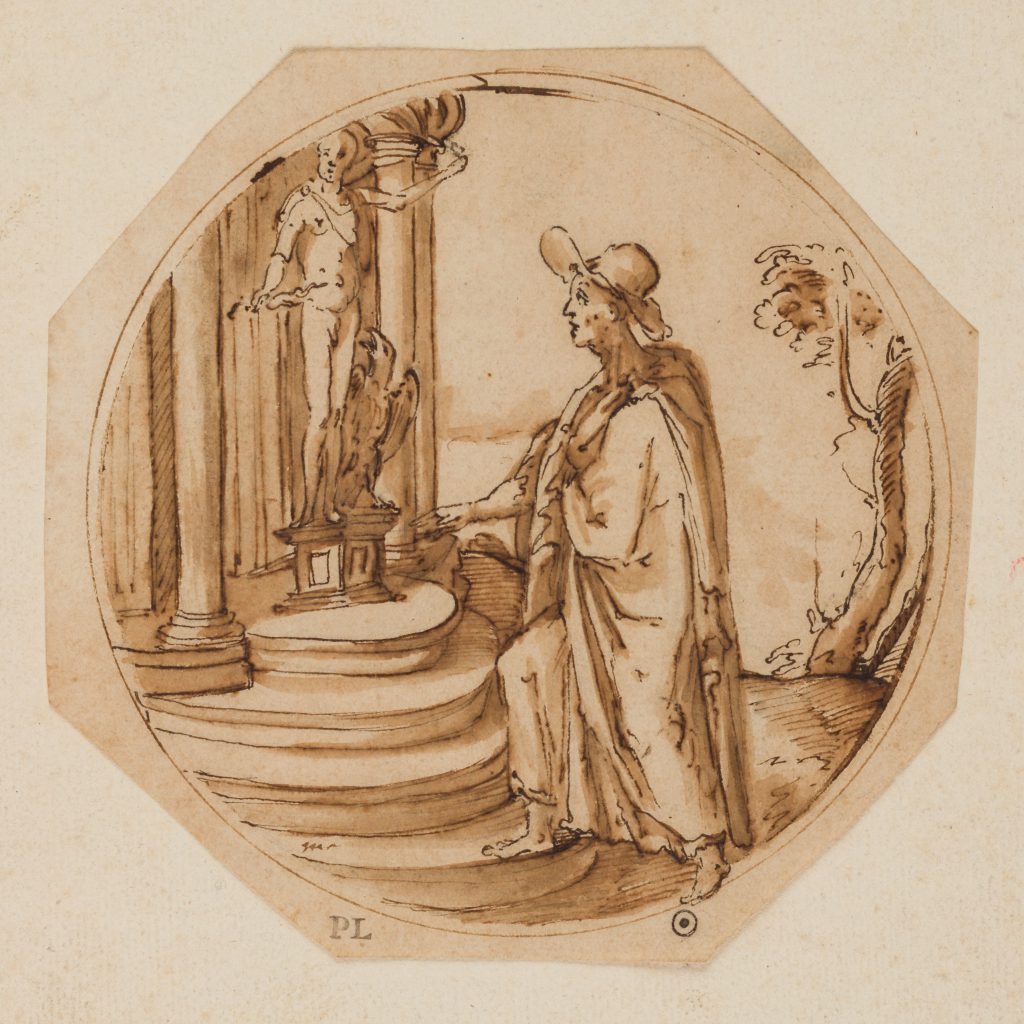Interior of a Roman Building Figures Carrying the Body of a Man
Gift of George and Elaine Keyes
2014.17The French antiquarian and artist Charles-Louis Clérisseau was one of the leading figures in the rise of neoclassical architecture in the late eighteenth century. His influence also extended to the United States; in 1785, Clérisseau was commissioned by Thomas Jefferson, then the United States’ Minister to France, to produce designs for the Virginia State Capitol based on the ancient Roman ruins of the Maison Carrée in Nîmes in the south of France. This capriccio—a fanciful architectural study combining fantasy and ancient ruins—is the product of decades spent carefully studying Roman ruins in Italy and France. The detailed architectural rendering combines complex vaults (a signature achievement of Roman architecture) with architectural ornament and funerary monuments drawn from ruins and artifacts scattered about modern Rome. Clérisseau’s rendering is at once fantastical and believable, indicating the artist’s deep knowledge of Roman architecture and study of buildings like the Pantheon and the Baths of Caracalla.
Clérisseau’s time as a young artist in Rome (1749–1767) involved careful study of ancient Roman ruins in the company of artists similarly inspired by the ancient world, including Giovanni Paolo Panini (1691–1765) and Giovanni Battista Piranesi (1720–1778). The influence of Piranesi—known both for his faithful renderings of Roman ruins and his capriccios of elaborate, vaulted subterranean prisons—can perhaps be detected in this gouache. On returning to Paris, Clérisseau was commissioned by many illustrious clients, including Catherine the Great, to create architectural plans.
He was also approached by Thomas Jefferson to provide designs for the Virginia State Capitol. Over the course of this commission, Clérisseau and Jefferson struck up a friendship founded on a shared passion for antiquity and neoclassical architecture. In the case of the plans for the Virginia State Capitol, Clérisseau’s basic concept for a building based on the ancient ruins of Nîmes can be easily detected in the final design. Based on the Maison Carrée, a well-preserved Roman temple in the south of France, the Capitol shows the distinct influence of classical models and can be considered a product of the close collaboration and friendship of two fellow antiquarians, Clérisseau and Jefferson. While it seems likely that the final design of the Capitol owes as much to Jefferson as to Clérisseau, Jefferson remained appreciative of the artist’s knowledge and commissioned a gift for Clérisseau inspired by antiquity.
